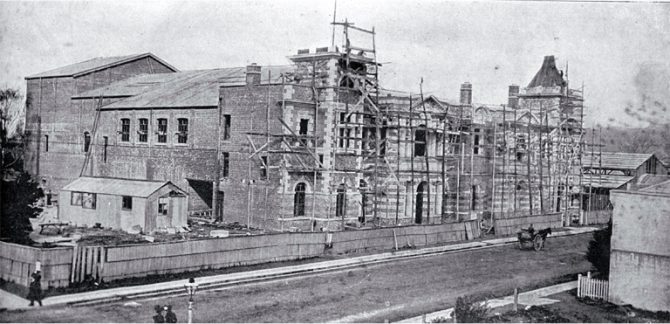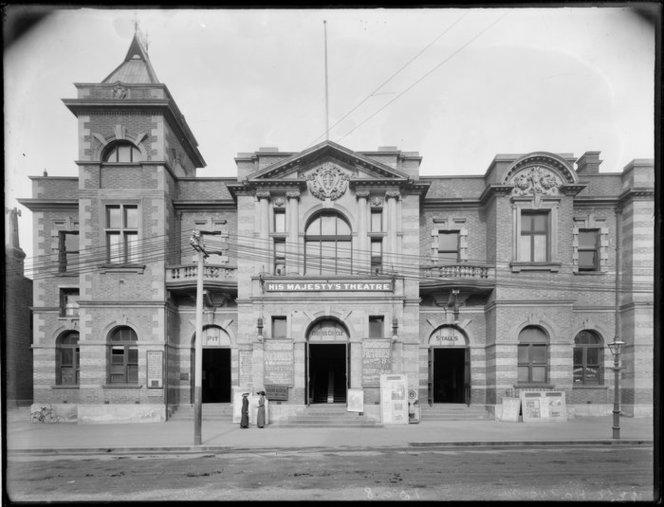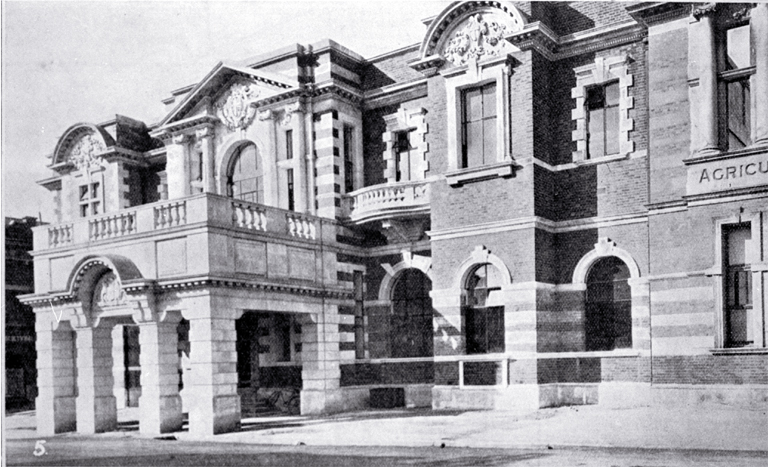"One of the biggest and most destructive fires experienced in the city in recent years took place last night, when the big block of buildings known as the Canterbury Hall, comprising His Majesty's Theatre, the Alexandra and Victoria Halls, the offices of the Canterbury Agricultural and Pastoral Association, the offices of the Canterbury Industrial Association, and suites of offices used for other purposes, were practically totally destroyed by fire." (Press, 12 Nov 1917)
A little after 8.30pm on 11 November 1917, clouds of smoke were noticed by passers-by coming from the roof of His Majesty's Theatre in Manchester Street. Hugh Crawford, caretaker of His Majesty’s, lived on site with his wife and daughter. Crawford had been at home that evening but it was his wife, returning home after being out visiting, that alerted him to the sound of cracking. On opening a door to the theatre they saw the stage was on fire.
Within minutes, the Central Fire Brigade Station had been notified, and by 8.45pm the brigade were on the scene. The fire, thought to have started in the dress circle, was intense. After a portion of the roof collapsed, the fire moved to the auditorium, and through the windows the big pipes of the city organ could be seen burning fiercely.
By 9.40pm the fire had spread to the front of the building and the meeting rooms of the Canterbury A & P Association. Mr Pemberton, Secretary to the Association, who had been alerted early to the fire, had managed to save the books from the safe but the Association would lose its library, memorabilia and portraits of past presidents in the flames.
After this the fire steadily mounted, and by 11 pm the whole of the Canterbury Hall block was gutted.
Canterbury Hall (also known as the Agricultural and Industrial hall) was owned by the Canterbury Hall Company, a group that included the Canterbury A & P Association and the Canterbury Industrial Association and was erected in 1900. William Albert Paxton Clarkson and Robert Anderson Ballantyne, architects, had designed the building, while Rennie and Pearce were responsible for its construction.
The hall hosted a number of events and receptions during its lifetime but its main event was the Jubilee Exhibition which opened in the hall in November 1900. By 1906 it was divided into three halls - the main hall was His Majesty’s Theatre, while the hall on the ground floor became Alexandra Hall, and the top floor hall was Victoria Hall. The building also housed the City’s Organ, purchased for the International Exhibition held in Hagley Park in 1906.
Over the years, the Canterbury Hall Company tried to sell the building to the City Council, but each time the proposal to purchase was defeated in a public vote of ratepayers.
Hayward’s Pictures used the hall for several years as a theatre, but in early 1917 after the last failure to secure the Council as a purchaser, a 10 year lease was taken out by Fuller Vaudeville Proprietary to run it as a vaudeville theatre.
When the hall, valued at £21,000, was lost to fire in November 1917, only the Manchester Street façade was left standing.
In 1918, plans were made between Fullers and the Canterbury Hall Company to rebuild a new theatre on the site – but these plans must have fallen through, as the empty shell of the old building stood on the Manchester Street site for another two years before Christchurch City Council bought it for the site of their new municipal offices.
Find out more about the history of the building and the fire:
- Read about The Civic of Canterbury. Christchurch City Libraries.
- Read newspaper articles about the fire on Papers Past.
- See more images of Canterbury Hall on DigitalNZ.
- View the plan for the Jubilee Exhibition in The Star, 1 November 1900.
Follow our tweets from @100chch to discover life and events 100 years ago in Christchurch and Canterbury.





Add a comment to: 100 years ago: Canterbury Hall fire